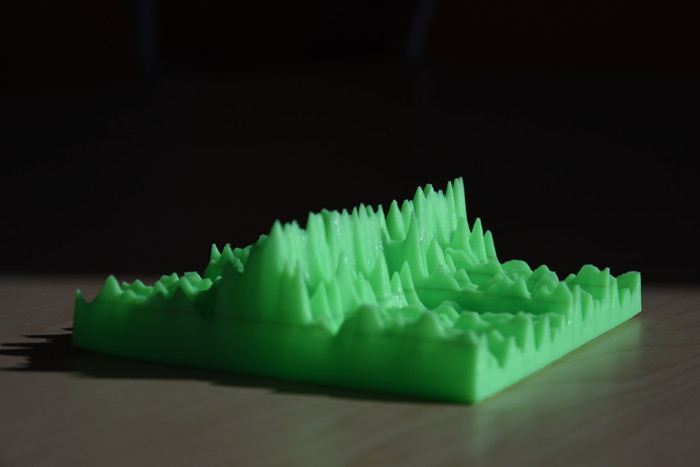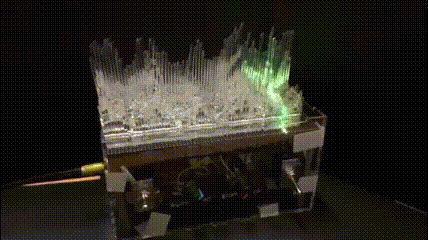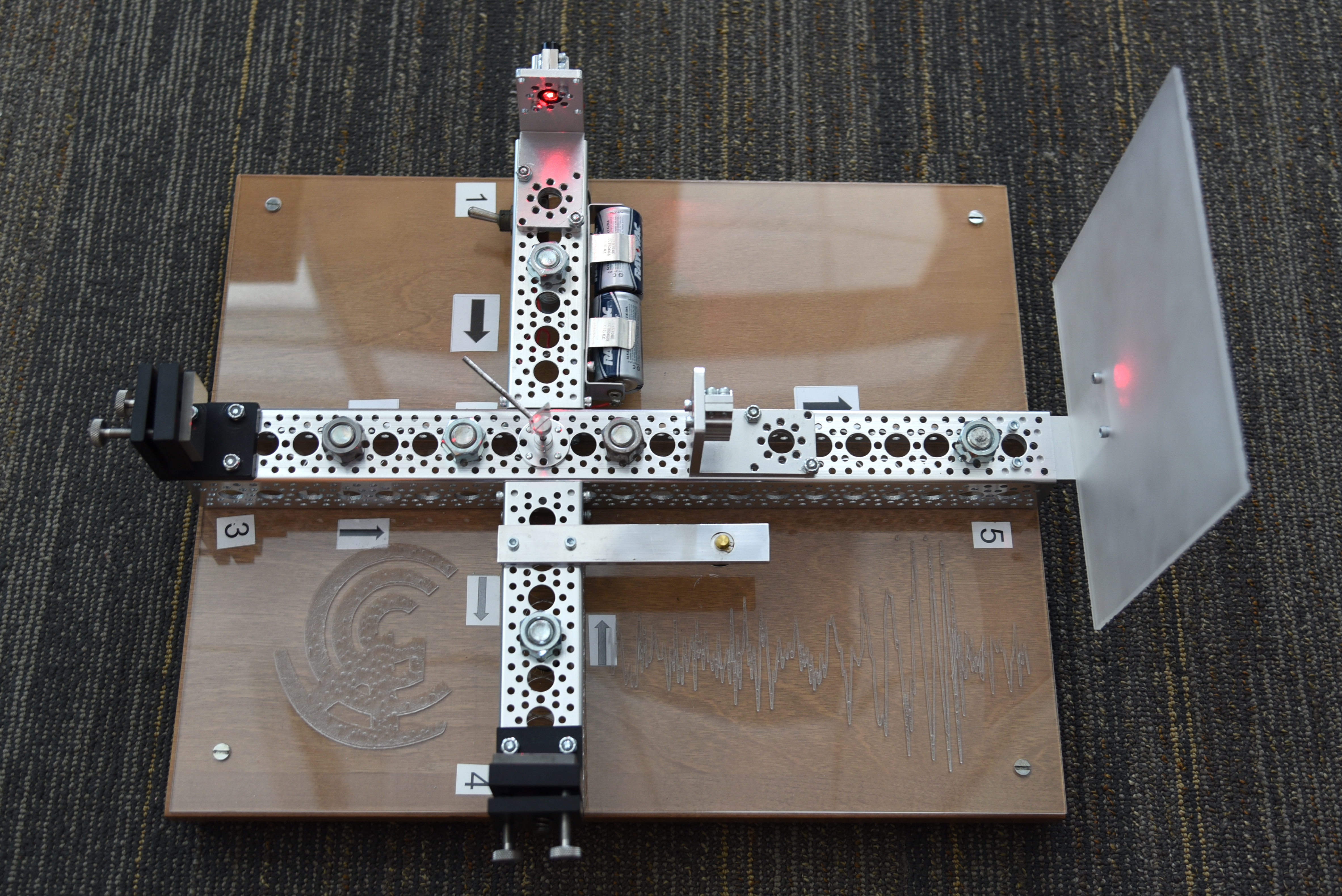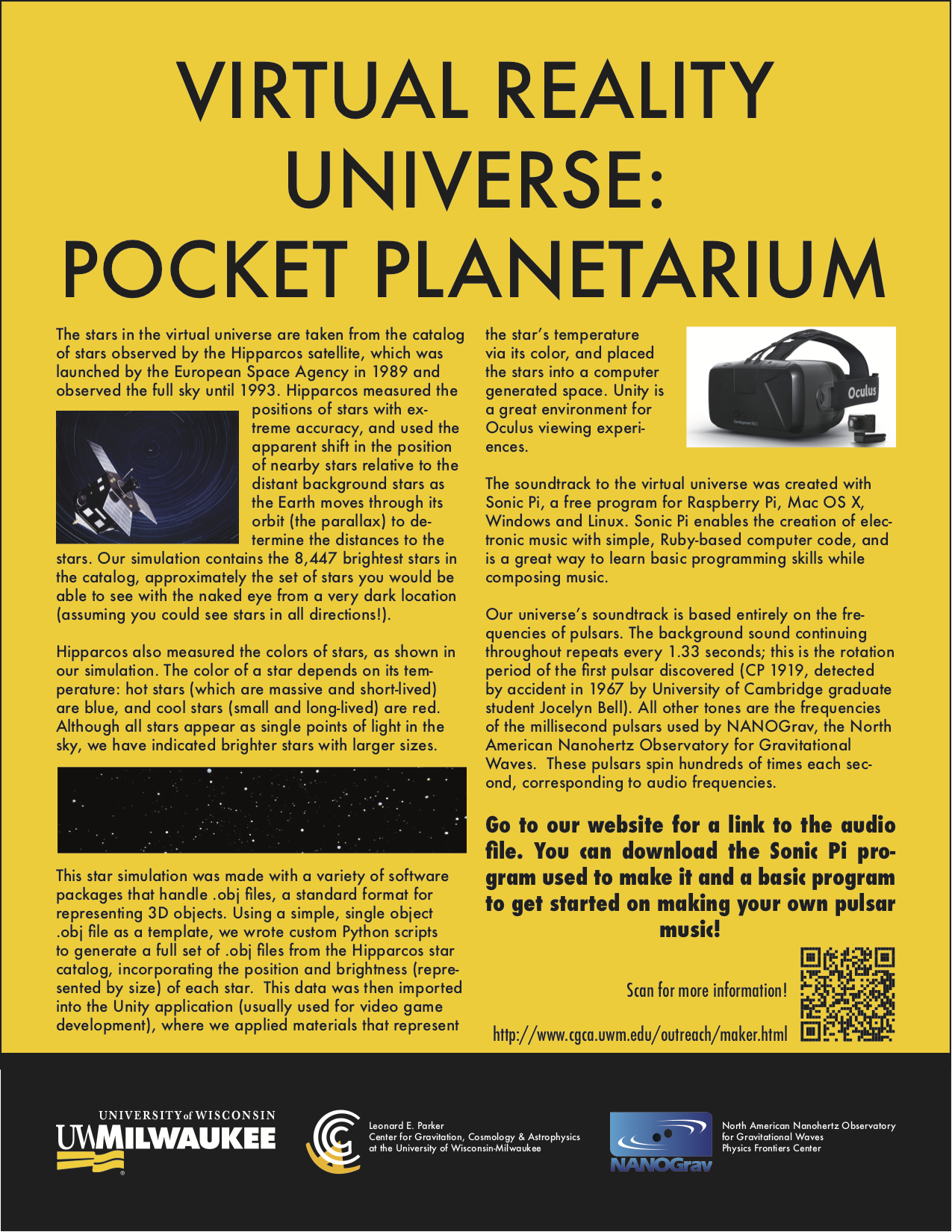3D Printing
We use 3D printing to interpret and display astronomical data, and to create astronomically-inspired wearables. The photo at right shows 86 individual pulses (about 61 seconds worth of data) of the pulsar B0329+54 observed on August 29, 2014 with the NRAO/Skynet 20m telescope, 3D-printed with the the assistance of the University of Wisconsin-Milwaukee Rapid Prototyping Lab and inspired by the cover of the Joy Division album Unknown Pleasures. Find us on Thingiverse (twice!) and Shapeways.

Pulse-o-Matic
The Pulse-o-matic uses an Arduino Mega and an LED board to show the progression of time along individual pulses from the pulsar B0329+54. The pulse profiles are laser-cut in acrylic.

Michelson Interferometer
We demonstrate the principles of gravitational-wave detection with a table-top Michelson interferometer, largely made by UWM student Rusty Mundorf and UWM Scientist Mike Manske. It uses a simple diode laser along with a beamsplitter and two movable mirror stages. The waveform visible in the top view is the first gravitational wave discovery from GW150914.

Pulsar Music
We also use science to make music. The piece linked here was made with the music coding software Sonic Pi, and uses tones corresponding to the audio frequencies of the millisecond pulsars used by the North American Nanohertz Observatory for Gravitational Waves.
Immersive Media Lab
The CGCA collaborates with UWM's Immersive Media Lab to explore the cosmos with virtual reality.

